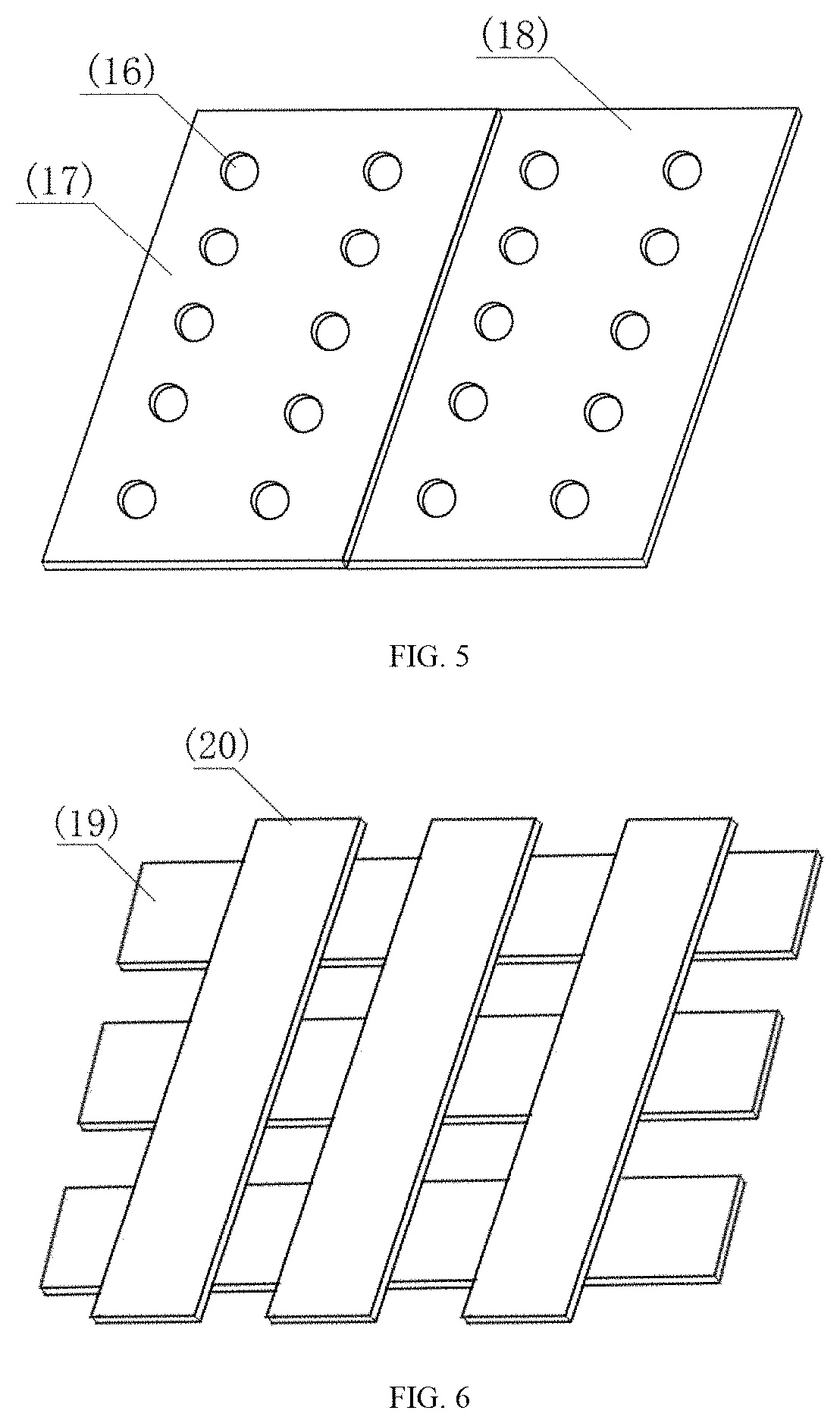Composite soft tissue repair material stable in repair area
a soft tissue and repair material technology, applied in the field of soft tissue repair, can solve the problems of long-term efficacy of acellular matrix biologic patches, loss of laxity, bulging or shrinking in the repair area of biological patches, etc., and achieve the effect of stable repair area, rapid ingrowth of host cells, and no loss of laxity
- Summary
- Abstract
- Description
- Claims
- Application Information
AI Technical Summary
Benefits of technology
Problems solved by technology
Method used
Image
Examples
example 1
[0052]Non-crosslinked small intestinal submucosa (SIS) was prepared by Abraham method.
[0053]Non-crosslinked SIS sheets were spliced into a larger-area layer in an interlacing manner, namely upper or lower layers Crosslinked SIS was prepared by treating non-crosslinked SIS with 0.5% (w / v) genipin solution for 72 hours, crosslinking degree of which was 50% by ninhydrin method and weight was 38 g / m2. The crosslinked SIS and the non-crosslinked SIS were composited to form a middle mechanical reinforcement layer by an interlacing method (FIG. 3), the method including the following steps:
[0054]Place a sterilized splint with rhombus hollows on a plate, lay a non-crosslinked SIS sheet (4) to allow an axial direction thereof be parallel along the edge of the splint, and place a sheet of non-crosslinked SIS (5) on the surface of crosslinked SIS sheet (4) so as to circumferentially overlap 50% of the crosslinked SIS sheet (4) and to maintain axial parallelism; place a sheet of crosslinked SIS ...
example 2
[0059]As shown in FIG. 4, crosslinked SIS and non-crosslinked SIS were prepared to be a middle mechanical reinforcement layer by a woven method, the method including the following steps:
[0060]Place a sterilized splint (100 mm×150 mm) with rhombus-like hollows on a plate, lay four crosslinked SIS sheets (8, 9, 10, 11) to a desired area and to allow an axial direction thereof be parallel to the horizontal direction of the splint, and maintaining axial parallelism of the SIS sheets, there being no gap or overlapping between two SIS sheets, so as to form a first SIS layer;
[0061]Fix the first SIS layer along the circumferential side, take a non-crosslinked SIS sheet (12) of appropriate length to make it axially perpendicular to the first SIS layer, forming a stable cross-stack between the first layer and the non-crosslinked SIS sheet (12) in an upper and lower alternating manner, after fix the non-crosslinked SIS sheet (12) along its circumferential side, place a non-crosslinked SIS shee...
example 3
[0063]Non-crosslinked urinary bladder matrix (UBM) and peritoneum were prepared by Abraham method. Non-crosslinked SIS was prepared as described in Example 1. The non-crosslinked SIS and the non-crosslinked UBM were composited to form upper and lower layers by an interlacing method as described in Example 1.
[0064]Crosslinked SIS was prepared as described in Example 1. Crosslinked porcine peritoneum was prepared by treating non-crosslinked peritoneum with 0.2% (w / v) glutaraldehyde solution for 6 hours, crosslinking degree of which was 80% by ninhydrin method. The crosslinked SIS, crosslinked peritoneum and non-crosslinked UBM were composited to form a middle mechanical reinforcement layer by a woven method as described in Example 2.
PUM
| Property | Measurement | Unit |
|---|---|---|
| diameter | aaaaa | aaaaa |
| thickness | aaaaa | aaaaa |
| diameter | aaaaa | aaaaa |
Abstract
Description
Claims
Application Information
 Login to View More
Login to View More - R&D
- Intellectual Property
- Life Sciences
- Materials
- Tech Scout
- Unparalleled Data Quality
- Higher Quality Content
- 60% Fewer Hallucinations
Browse by: Latest US Patents, China's latest patents, Technical Efficacy Thesaurus, Application Domain, Technology Topic, Popular Technical Reports.
© 2025 PatSnap. All rights reserved.Legal|Privacy policy|Modern Slavery Act Transparency Statement|Sitemap|About US| Contact US: help@patsnap.com



